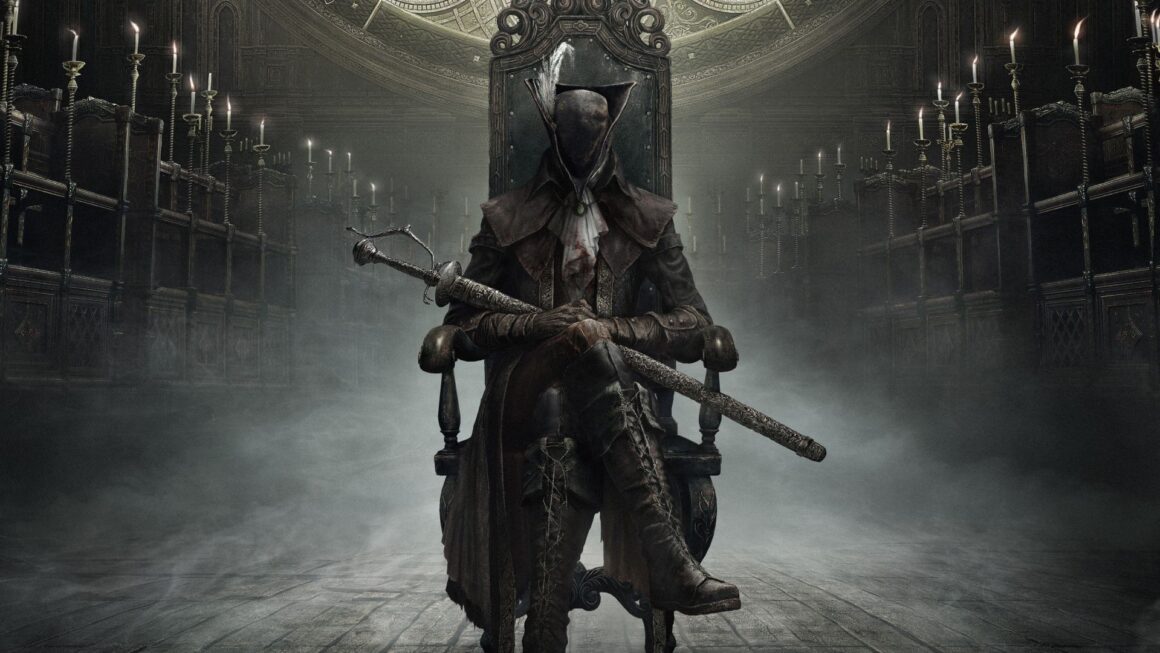The Soulsborne games made by FromSoftware are some of the company’s finest work. From the original Demon’s Souls, three main Dark Souls games plus standalone titles like Bloodborne have emerged. The Soulsborne games are enjoyable because they follow a simple formula and always present the player with a satisfying challenge. The formula for Dark Souls games has evolved only slightly with each new installment, but the core gameplay remains the same.
Another game in the Soulsborne category is FromSoftware’s Bloodborne, which like its predecessors stuck to the fundamental premise but made some significant changes to the gameplay and fighting. Even after all these years, Bloodborne is still regarded as one of FromSoftware’s finest works, thanks to its unique blend of the trademark difficulty of other FromSoftware games and just enough innovation to set it apart. However, due to Bloodborne’s significant alterations to the series’ staples, many players find it challenging to go back to the Dark Souls games proper after completing the DLC.
Even if Bloodborne deviates from the pattern established by past FromSoftware games in several ways, the core gameplay remains the same. Bloodborne’s core combat mechanics, which rely on stamina and health management, are remarkably similar to those of the Dark Souls titles. To maintain in line with the basic gameplay that players have grown to expect from the Soulsborne series, Bloodborne retains the same principles as the other games in the series, which require players to pay strict attention to their supplies.
More than that, Bloodborne has a tale that is as cryptic as that of any Dark Souls game. Fans of any of the Soulsborne titles, even if they don’t start out playing the games for the plot, will eventually become engrossed with the history of the planet, its people, and the events that have led up to the present day. Despite its unique plot, Bloodborne is delivered in the same style as the other Soulsborne titles, requiring players to delve deeply into the game’s lore to learn the truth. Here’s why there are some significant differences between the two titles.
Different gameplay
While Bloodborne’s gameplay is mostly based on that of the Dark Souls series, it does deviate enough from the formula to set it apart and make it challenging for certain fans to go back to the series. The refined combat mechanics are the game-changer in Bloodborne. While Bloodborne’s core mechanics are identical to those in prior Soulsborne games, subtle tweaks have significantly altered how players should approach fights.
The fast-paced fighting in Bloodborne is matched with a novel system that enables players to heal themselves after taking damage so long as they quickly strike an enemy. Bloodborne’s healing items are distinct from Dark Souls’ refillable Estus Flasks, and the rally ability further encourages aggressive combat. To maintain health and a supply of healing items, players in Bloodborne must remain aggressive, as the game does not feature a resting system where they can replenish all of their health items at once. Instead, players are given a limited number of Blood Vials that can be discovered in the world or acquired as enemy drops.
Removing the need for shields
Eliminating the use of a shield is the most significant alteration to combat in Bloodborne. The use of a shield to block and deflect enemy strikes is crucial in the Dark Souls games. The Dark Souls games can be played without a shield or the roll to prevent damage, but the combat was specifically intended for players to make use of the block and parry features, as the pacing relies on dodging enemy strikes and striking when they’re weak. Although shields are present in Bloodborne, players have limited options and they are largely ineffective.
Bloodborne does not include shields but instead equips the player with a handgun that, when used correctly, can deflect opponent attacks and allow for a visceral counterattack, much like the parry and riposte mechanics in Dark Souls. The use of firearms and the style of fighting in Bloodborne are the most notable distinctions. Since players can’t use a shield to deflect projectiles, they must be considerably more proactive in combat, using the quick dash in Bloodborne to quickly enter and exit the fray.
When compared to the Dark Souls series, Bloodborne’s primary weapons provide a fresh take on things. Bloodborne’s weapons are called Trick Weapons, and they can all morph into different versions that dramatically modify the attack pattern, power, and flexibility of each weapon, yet operating in a similar fashion with a basic and heavy assault. Bloodborne has a smaller arsenal than its competitors, but the Trick Weapons add enough variation to the player’s arsenal that they can significantly change their playstyle.
It’s easy to see that there are significant variations between Bloodborne and the other Soulsborne titles, despite the fact that they share a similar framework. The primary distinction is in the games’ approaches to battle. Most fans of the Dark Souls series take their time and play the game cautiously, in part because of the game’s slower pace and the necessity of waiting or retreating to restore ground or health. However, in Bloodborne, the player’s performance in fighting is greatly improved if they play the game aggressively, as this strategy is essential for retaining an upper hand in battle and even regaining lost health.








